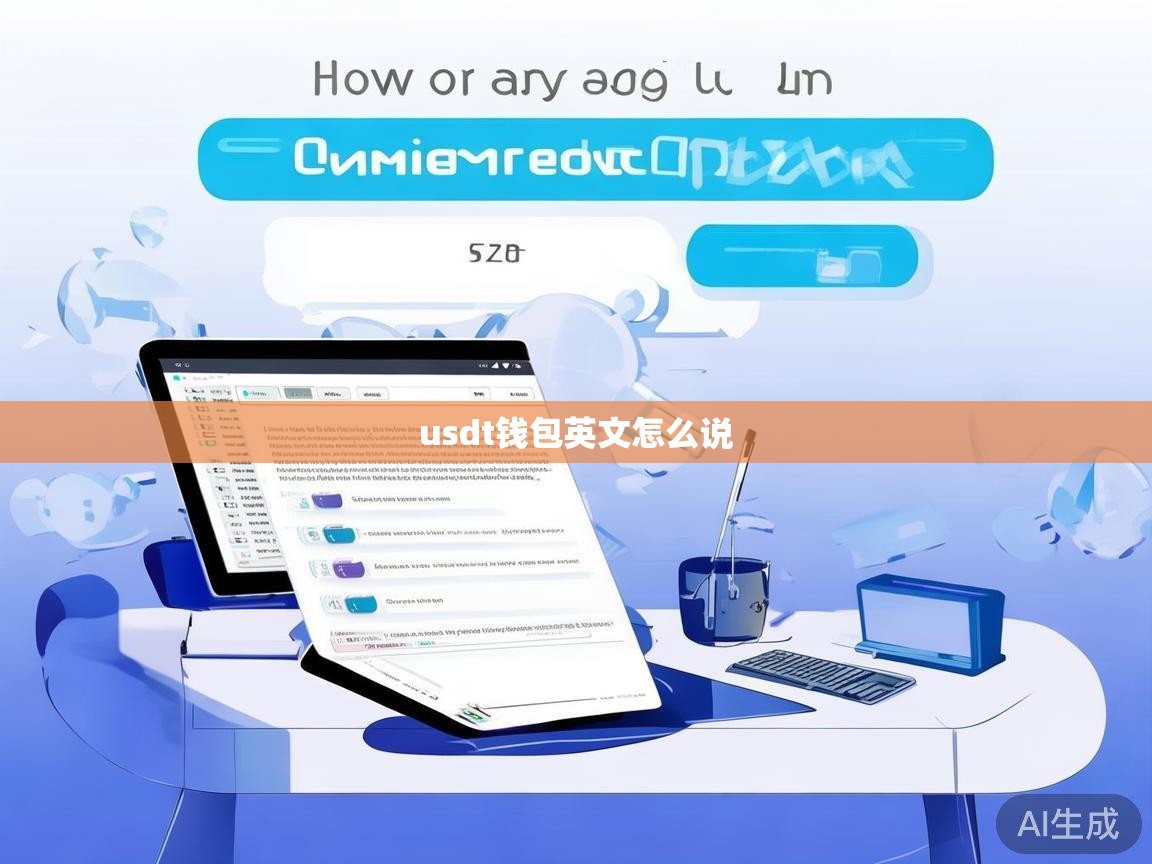In the rapidly evolving world of cryptocurrency, understanding key terms is essential for both beginners and seasoned investors. One such term is "USDT wallet," which refers to a digital storage solution for TETHer (USDT), a popular stablecoin pegged to the US dollar. But how do you say "USDT wallet" in English? Simply put, it's called a "USDT wallet" or sometimes referred to as a "Tether wallet." This article will delve into the intricacies of USDT wallets, their types, importance, and how to choose the right one, all while explaining the terminology in clear English.

What is a USDT Wallet?
A USDT wallet is a software or hardware tool that allows users to store, send, and receive Tether (USDT) Tokens. USDT, or Tether, is a type of cryptocurrency known as a stablecoin because its value is designed to remain consistent with the US dollar, minimizing volatility. This makes it a favored asset for trading, remittances, and as a safe haven during market fluctuations. The term "wallet" in English is straightforward—it's derived from the concept of a physical wallet but digitalized for cryptocurrencies. So, when discussing it in English, you might say, "I use a USDT wallet to manage my Tether holdings," or "What's the best Tether wallet for security?"
Types of USDT Wallets
USDT wallets come in various forms, each with its own advantages and drawbacks. Understanding these types is crucial for safe and efficient usage.
-
Software Wallets: These are applications or online platforms that store USDT. They include:
- Web Wallets: Accessed through browsers, such as those provided by exchanges like Binance or Coinbase. In English, you might call them "online USDT wallets" or "web-based Tether wallets." They are convenient but less secure due to potential hacking risks.
- Mobile Wallets: Apps installed on smartphones, e.g., Trust Wallet or MetaMask. These are often termed "mobile USDT wallets" and are ideal for on-the-go transactions.
- Desktop Wallets: Software downloaded to a computer, like Exodus or Atomic Wallet. Referred to as "desktop Tether wallets," they offer better security than web versions but require regular updates.
-
Hardware Wallets: Physical devices, such as Ledger or Trezor, that store USDT offline. In English, these are known as "hardware USDT wallets" or "cold storage wallets." They provide the highest security by keeping private keys offline, making them immune to online threats. For instance, you could say, "I secure my USDT with a hardware wallet to prevent cyber attacks."
-
Paper Wallets: These involve printing the private key and public address on paper. While less common, they are called "paper USDT wallets" and are a form of cold storage. However, they risk physical damage or loss.
Importance of a USDT Wallet
Why is having a USDT wallet important? First, it ensures control over your assets. Unlike leaving USDT on an exchange—where you don't hold the private keys—a wallet gives you full ownership. In English, this concept is often emphasized as "not your keys, not your crypto." Second, wallets facilitate seamless transactions. For example, if you're involved in international trade, you might say, "I use my USDT wallet to send payments quickly without bank delays." Third, security: a good wallet protects against theft and fraud. With rising crypto scams, phrases like "secure USDT wallet" are common in discussions.
How to Choose the Right USDT Wallet
Selecting the appropriate wallet depends on your needs. Here are some factors to consider, explained in simple English terms:
- Security: Opt for wallets with two-factor authentication (2FA), encryption, and backup options. Hardware wallets are best for large holdings—often described as "the most secure USDT storage."
- User-Friendliness: Beginners might prefer "user-friendly USDT wallets" like mobile apps with intuitive interfaces.
- Compatibility: Ensure the wallet supports USDT on its native blockchain (e.g., Omni, Ethereum, Tron). In English, you'd check if it's "compatible with USDT tokens."
- Cost: Some wallets charge fees for transactions or maintenance. Compare "low-fee USDT wallets" to minimize expenses.
Common English Phrases and Usage
When discussing USDT wallets in English, you'll encounter phrases like:
- "How to create a USDT wallet?" – This refers to the setup process.
- "Best USDT wallet for beginners" – Highlights recommendations for new users.
- "US wallet withdrawal to USDT wallet" – Des moving funds from a traditional bank to crypto.
Conclusion
In summary, "USDT wallet" is the standard English term for a digital storage solution for Tether tokens. Whether you're a trader, investor, or casual user, understanding this terminology and the types of wallets available is vital for navigating the crypto space safely. By choosing a wallet that balances security, convenience, and cost, you can harness the full potential of USDT for transactions and investments. Remember, in the world of cryptocurrency, knowledge is power—and knowing how to say and use "USDT wallet" in English is a step toward financial empowerment. As the crypto ecosystem grows, staying informed with clear, accurate terms will help you avoid pitfalls and maximize opportunities. So, next time you talk about crypto, confidently use phrases like "I manage my USDT through a secure hardware wallet" to communicate effectively in English.
USDT钱包英文怎么说

